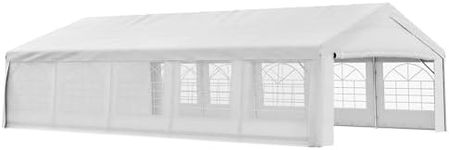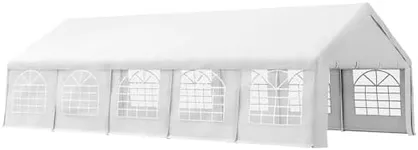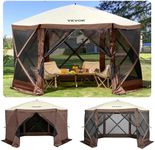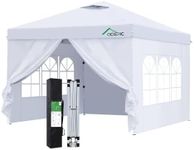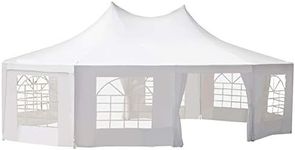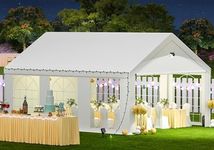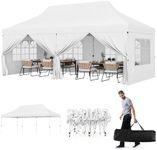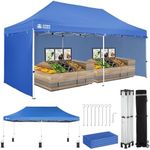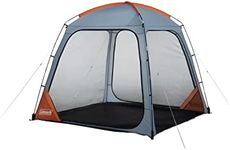Buying Guide for the Best Party Tents
Choosing the right party tent is all about matching your needs with the tent’s features. Think about the type of event you’re hosting, the number of guests, the location, and the weather conditions you might face. A good party tent should provide enough space, be easy to set up, and offer protection from sun, wind, or rain. By understanding the key specifications, you can make sure your tent will keep your guests comfortable and your event running smoothly.Size and CapacitySize and capacity refer to the dimensions of the tent and how many people it can comfortably accommodate. This is important because you want to ensure there’s enough space for your guests, tables, and any other equipment. Tents come in a range of sizes, from small ones for intimate gatherings to large ones for big parties. To choose the right size, consider the number of guests and whether you’ll need space for things like a dance floor or buffet tables. It’s always better to have a little extra room than not enough.
Material and DurabilityThe material of the tent affects how well it stands up to weather and how long it will last. Most party tents are made from polyester, polyethylene, or canvas. Polyester is lightweight and water-resistant, polyethylene is tough and waterproof, and canvas is heavy-duty and breathable. If you expect rain or strong sun, look for waterproof and UV-resistant materials. For frequent use, choose a tent with thicker, more durable fabric. Your choice should depend on how often you’ll use the tent and the typical weather in your area.
Frame Type and StrengthThe frame is what holds the tent up, and its strength determines how well the tent can handle wind and rough use. Frames are usually made from steel or aluminum. Steel is heavier and very strong, making it good for windy conditions, while aluminum is lighter and easier to move but may not be as sturdy. If you plan to set up the tent often or in different places, a lighter frame might be better. For permanent or long-term setups, a heavier, stronger frame is a safer choice.
Ease of SetupEase of setup describes how simple it is to put the tent together and take it down. Some tents have pop-up designs that can be set up quickly by just a couple of people, while others require more time and effort, sometimes with tools. If you’ll be setting up the tent by yourself or with minimal help, look for a tent that advertises quick or tool-free assembly. For larger events where you have more hands, a more complex tent might be fine.
Weather ResistanceWeather resistance covers how well the tent protects against rain, wind, and sun. Features like waterproof seams, UV protection, and wind-resistant designs are important if you expect unpredictable weather. Some tents come with sidewalls or windows for extra protection. If your event is during a season with uncertain weather, prioritize tents with strong weather resistance. For indoor or fair-weather use, this may be less critical.
Ventilation and WindowsVentilation and windows help keep the inside of the tent comfortable by allowing air to flow and letting in natural light. Tents with mesh windows or vents are less likely to get stuffy, especially in warm weather. If your event is during the summer or in a hot climate, good ventilation is important. For cooler weather, you might want fewer openings to keep warmth inside.
Portability and StoragePortability and storage refer to how easy it is to move and store the tent when not in use. Some tents come with carrying bags and fold down to a compact size, making them easy to transport. If you need to move the tent between locations or have limited storage space, look for a tent that is lightweight and packs down small. For permanent setups, portability is less important.
